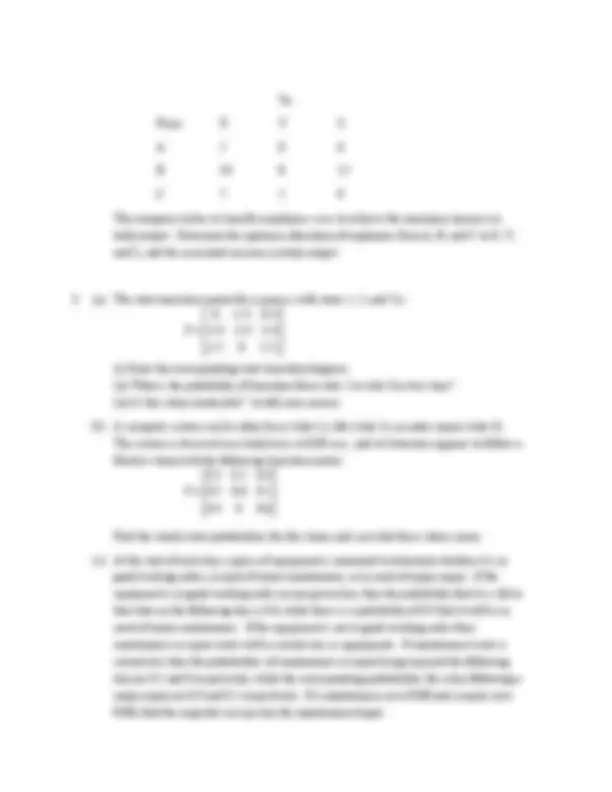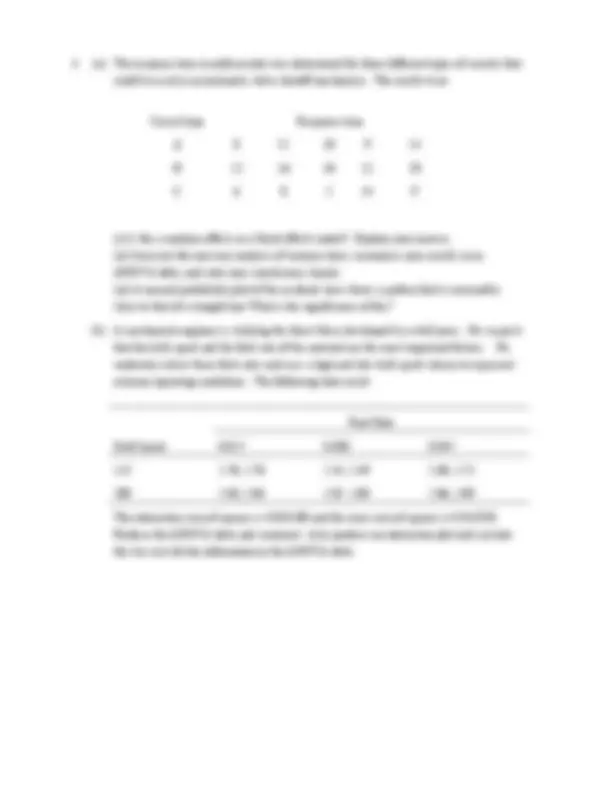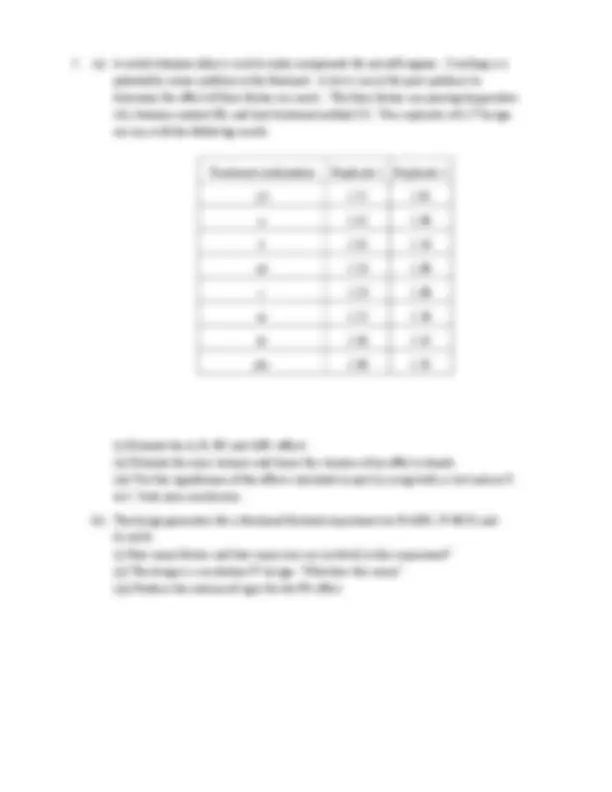





Study with the several resources on Docsity

Earn points by helping other students or get them with a premium plan


Prepare for your exams
Study with the several resources on Docsity

Earn points to download
Earn points by helping other students or get them with a premium plan
Community
Ask the community for help and clear up your study doubts
Discover the best universities in your country according to Docsity users
Free resources
Download our free guides on studying techniques, anxiety management strategies, and thesis advice from Docsity tutors
Main points of this past exam are: Complementary Slackness Theorem, Dual Simplex Method, Applicable, Linear Programming, Simplex Table, Identified, Characteristics, Dual Simplex Method, Subject, Company
Typology: Exams
1 / 6

This page cannot be seen from the preview
Don't miss anything!




Instructions: Answer FOUR questions. All questions carry equal marks. Statistical tables are available.
Examiners: Mr. D. O’Hare Mr. J. Hegarty Prof. J. Monaghan
subject to 3 10
minimise 2 4
1 2
1 2
1 2
1 2
x x
x x
x x
z x x
(iii) Write down the dual of the problem in part (ii), and deduce its solution using the Complementary slackness theorem. (b) The production manager of a company is attempting to determine the upcoming four- month production schedule. Past production records indicate that 2000 units can be produced per month on regular time, at a cost of €20 per unit. An additional 600 units per month can be produced on an overtime basis, at a cost of €25 per unit. Contracted sales for the period are as follows:
Month Contracted Sales 1 1600 2 2200 3 2500 4 3000 Inventory carrying costs are €3 per unit per month.
Represent this problem in the form of a balanced transportation table. Note that production in any month cannot be used to satisfy demand in an earlier month. It is not necessary to find a solution to the problem that you formulate.
subject to 2
minimise 2
1 2
1 2
1 2
1 2
x x
x x
x x
z x x
(b) The table shown below relates to the following LP problem:
subject to 10
maximise 3 2 2
1 2 3
1 2 3
1 2 3
1 2 3
1 2 3
x x x
x x x
x x x
x x x
z x x x
Basis z x 1 x 2 x 3 S 1 S 2 S 2 Soln. S 1 0 0 0 1/4 1 -1/4 -1/4 5/ x 1 0 1 0 5/4 0 3/4 -1/4 25/ x 2 (^0 0 1) -1/2 0 -1/2 1/2 5/ (z) (^1 0 0) 3/4 0 5/4 1/4 75/ (i) Carry out sensitivity analysis on the objective function coefficients of x 2 and x (^3) (separately) and state your conclusions. (ii) x 3 relates to the production level of product X. If two units of product X are required for a special customer, analyse the impact on the current optimal product mix, and find the revised solution.
(c) A large company is closing three of its existing plants and intends to transfer some of its more skilled employees to three plants that will remain open. The numbers of employees available for transfer from plants A, B, and C are 60, 110, and 75, respectively, and the numbers required at plants X, Y, and Z are 50, 90, and 30 respectively. Each transferred employee will increase output per day as follows:
Circuit type Response time A 8 12 10 9 14 B 15 16 18 12 20 C 6 8 5 14 9
(i) Is this a random-effects or a fixed effects model? Explain your answer. (ii) Carry out the one-way analysis of variance here, summarise your results in an ANOVA table, and state your conclusions clearly. (iii) A normal probability plot of the residuals here shows a pattern that is reasonably close to that of a straight line What is the significance of this? (b) A mechanical engineer is studying the thrust force developed by a drill press. He suspects that the drill speed and the feed rate of the material are the most important factors. He randomly selects three feed rates and uses a high and low drill speed chosen to represent extreme operating conditions. The following data result:
Feed Rate Drill Speed 0.015 0.030 0. 125 2.70, 2.78 2.45, 2.49 2.60, 2. 200 2.83, 2.86 2.85. 2.80 2.86, 2. The interaction sum of squares is 0.031400 and the error sum of squares is 0.013350. Produce the ANOVA table and comment. Also produce an interaction plot and say how this ties in with the information in the ANOVA table.
Treatment combination Replicate 1 Replicate 2 (1) 1.71 1. a 1.42 1. b 1.35 1. ab 1.23 1. c 1.23 1. ac 1.25 1. bc 1.46 1. abc 1.38 1.
(i) Estimate the A, B, BC and ABC effects. (ii) Estimate the error variance and hence the variance of an effect estimate. (iii) Test the significance of the effects calculated in part (i), using both a t -test and an F- test. State your conclusions. (b) The design generators for a fractional factorial experiment are E=ABC, F=BCD, and G=ACD. (i) How many factors and how many runs are involved in this experiment? (ii) The design is a resolution IV design. What does this mean? (iii) Produce the column of signs for the FG effect.